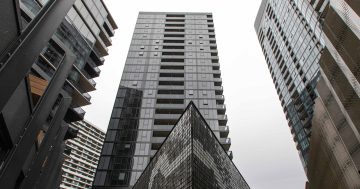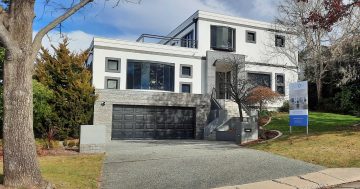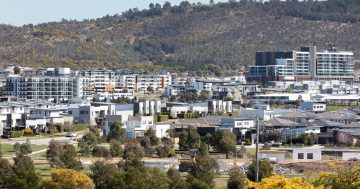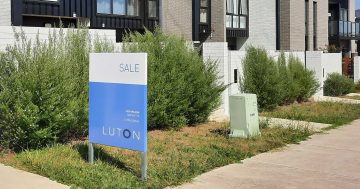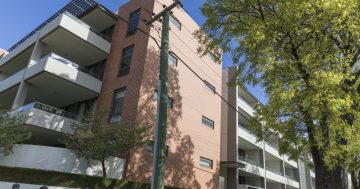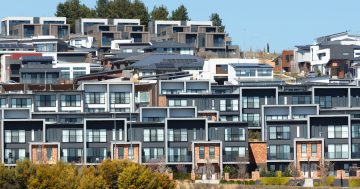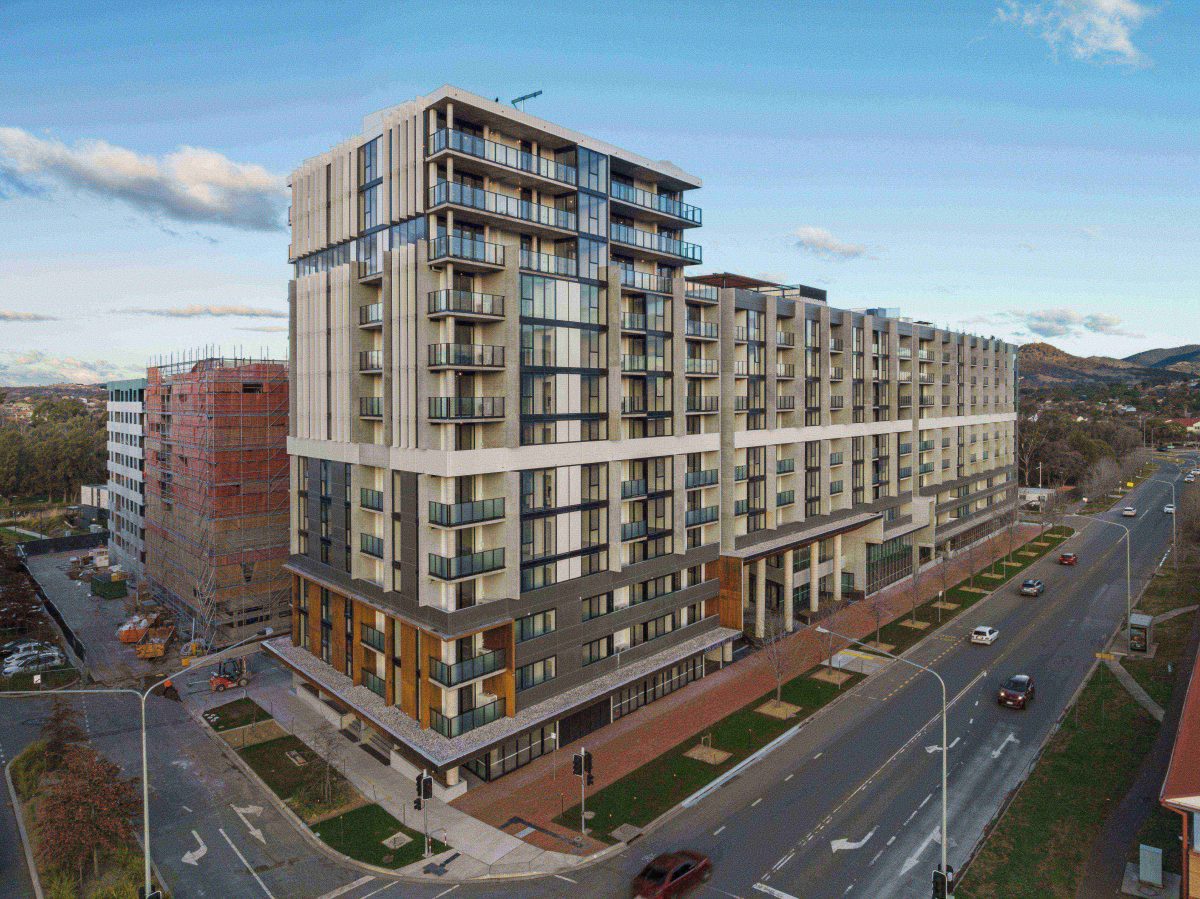
Budget-sensitive Canberra home buyers are finding value in apartments and townhouses. Photo: Geocon.
Canberra’s housing market downturn appears to have been short-lived, with prices bottoming and picking up again in the medium to high-density sector.
Overall, the market in April was flat, putting an end to the price falls precipitated by the Reserve Bank’s war on inflation and its steep interest rate escalation.
All eyes will be on the Reserve Bank today to see if it continues to pause interest rates.
CoreLogic’s monthly Home Value Index in March showed a slight fall of just -0.5 per cent but April’s data reveals that downward trajectory has been arrested.
House prices barely moved at -0.2 per cent for a median of $946,463 but units and townhouses edged upwards for the second consecutive month at 0.5 per cent to bounce back over the $600,000 mark.
Standalone houses are down, at -2.6 per cent for the year and -11.1 per cent over the past 12 months, but still way ahead of pre-pandemic levels.
Units and townhouses are still also down marginally for the year at -0.3 per cent and -2.7 per cent for the 12 months but on the way back up, driven particularly by buyers looking for value and deterred by the still big price tags for standalone houses and higher interest rates eating into their borrowing capacity.
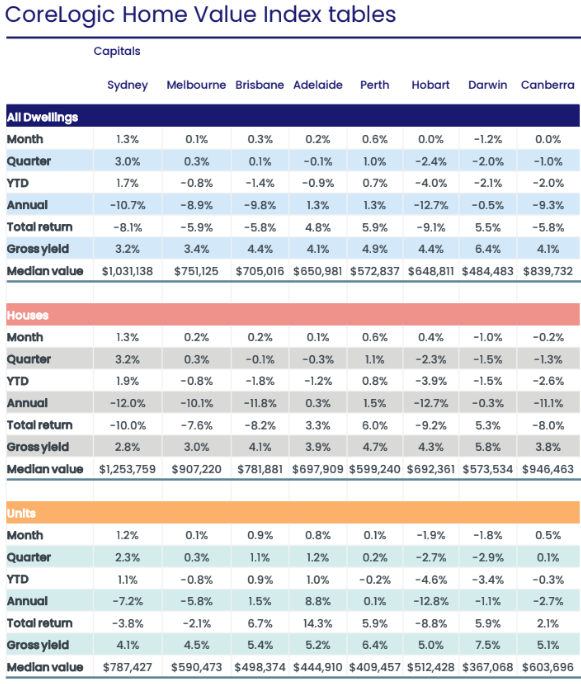
CoreLogic’s most recent Home Value Index data. Image: CoreLogic.
The Property Collective’s director of sales and projects Will Honey said the market was soft but there were signs that confidence was returning, probably due to the belief that interest rates may have plateaued.
Mr Honey said the weekend just gone produced more numbers at open homes than seen for a while despite the weather, and auction clearance rates were higher.
There had also been a bit more stock around in recent times, although apartments were in short supply and the outlook for new developments was constrained.
Mr Honey said that fewer numbers of apartments might be feeding into price increases but the big drivers for them and townhouses were affordability and the ability to service a loan.
“The differential between the median house price and apartment price has been the biggest it’s ever been,” he said.
There were plenty of first-home buyers about, but the biggest sector impacted by rate rises and the soaring cost of living was the larger four-bedroom family house.
Mr Honey said his firm was also fielding more enquiries from out of town, indicating that migration – interstate or overseas – may be starting to have an effect, as it most certainly is in Sydney and Melbourne.
Mr Honey said the market would be looking to the Reserve Bank and where interest rates would go.
“A couple more rate holds and there’ll be more confidence,” he said.
Mr Honey hosed down talk of the market returning to its peak, saying he expected more certainty and stability.
“A bit more normality,” he said.
Nationally, it appears as if the market has digested the interest rate rises, posting a second consecutive rise with the national Home Value Index (HVI) up by half a per cent in April, following a 0.6 per cent lift in March to be 1 per cent higher over the past three months.
The four largest capital cities all recorded a rise in housing values over the rolling quarter.
CoreLogic’s research director Tim Lawless said the housing market had moved through an inflection point.
“Not only are we seeing housing values stabilising or rising across most areas of the country, a number of other indicators are confirming the positive shift,” he said.
“Auction clearance rates are holding slightly above the long-run average, sentiment has lifted and home sales are trending around the previous five-year average.”












